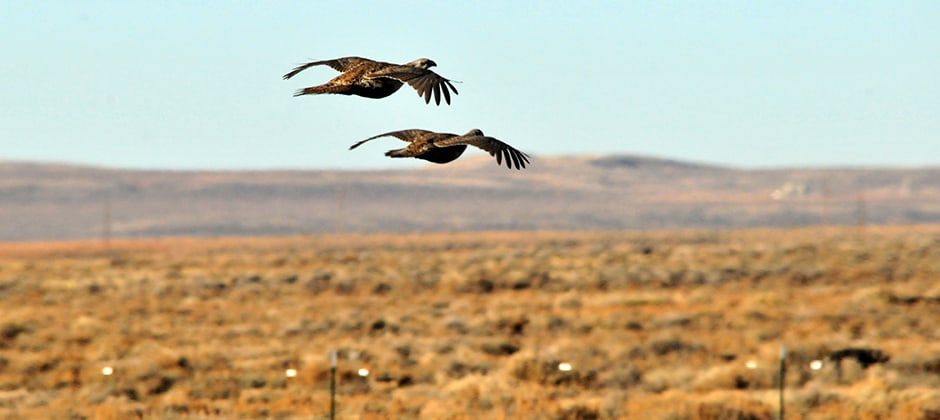Share this article
Drawing a line on sagebrush fires may cause other problems
Efforts to limit wildfires on sagebrush landscapes may lead to unintended ecological consequences for species like sage-grouse, according to recent research.
The Bureau of Land Management wanted to analyze the possible ecological effects of cutting fuel breaks sagebrush across the Great Basin. These fuel breaks — which involve cutting fire prone vegetation or planting fire resistance plants along linear swaths that could provide fuel for wildfires — are part of an effort to reduce the size and intensity of wildfires, which are increasing due to invasive plant species, climate change and other factors.
“We need to be able to look at different patterns of fuel breaks on the landscape relative to our resources and the habitats we’re trying to protect,” said Douglas Shinneman, a research ecologist with the U.S. Geological Survey’s Forest and Rangeland Ecosystem Science Center and the lead author of a review published recently in Frontiers in Ecology and the Environment.
Fuel breaks are intended to protect wildlife ecosystems, since invasive plant species like cheatgrass often move into burned areas faster than native ones. But since managers knew that cutting lines through sagebrush and other ecosystems to build roads, pipelines or power lines can change the balance between predators and prey, they wondered if cutting across sagebrush could also have unintended consequences.
They tasked the USGS with undertaking a review of studies conducted on breaks cut into the landscape. Despite a lack of data on fuel breaks in sagebrush, Shinneman’s team found evidence that they might lead to an increase in edge effects — the term referring to interactions that occur at the edge of different types of ecosystems. In this case it means relatively barren fuel breaks connecting across sagebrush could give predators like common ravens (Corvus corax) easier access to prey like greater sage-grouse (Centrocercus urophasianus), upsetting the normal trophic balance.
The breaks may also allow invasive plant species like cheatgrass to move in, Shinneman said, which could actually increase the risk of the wildfires the fuel breaks are intended to prevent. By trying to protect intact sagebrush ecosystems from the significant threat of wildfire, he said, “we’re clearly also potentially increasing the risk of loss of core habitat or fragmentation of core habitat.”
Header Image: Greater sage-grouse thrive in sagebrush, but it’s unclear how fuel breaks cut to limit wildfires may affect these birds and their ecosystem. ©Tom Koerner/USFWS








